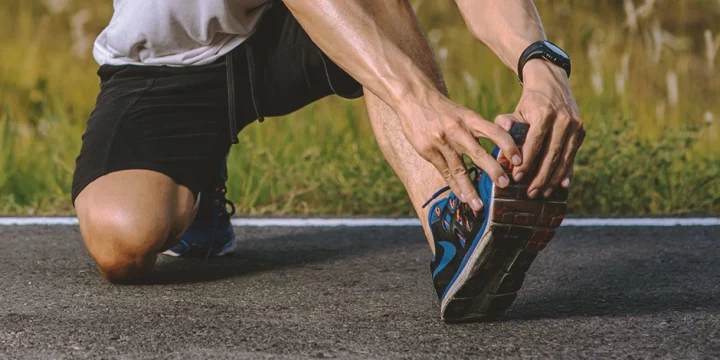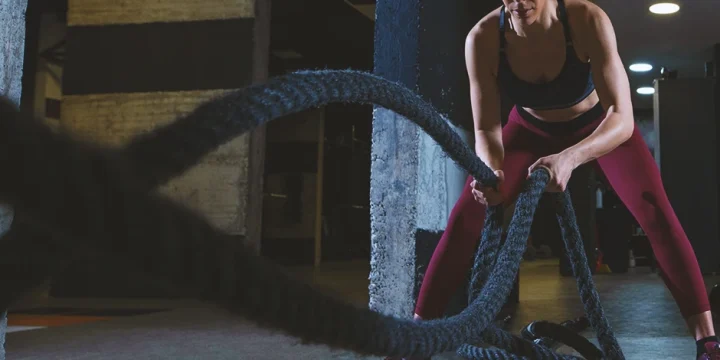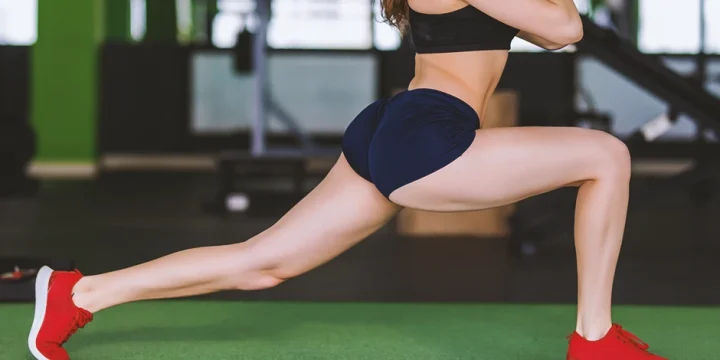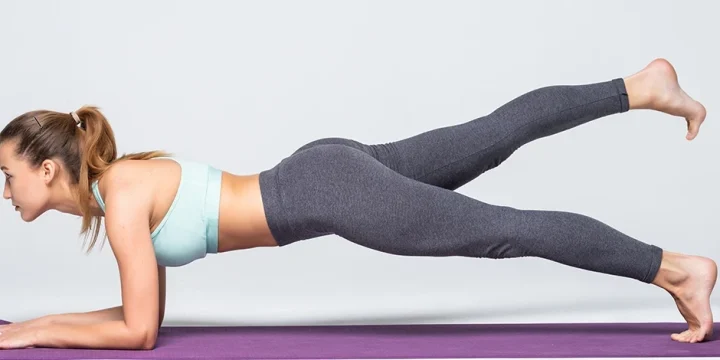As a professional MMA fighter and certified trainer, I've leveraged HIIT's power for aerobic and anaerobic gains, lactate resistance, and VO2 max improvement.
However, beginners often struggle with intensity and rest balance, risking failure or injury.
With my extensive research and experience, this article distills essential HIIT insights for beginners, from workout structure to key exercises, ensuring a safe and effective start.
Quick Summary
- HIIT workouts, ideal for beginners, offer a time-efficient way to boost aerobic and anaerobic conditioning, enhance lactate resistance, and increase VO2 max.
- Beginners should start with 30-second high-intensity intervals followed by 120 seconds of low-intensity walking, gradually increasing intensity and decreasing recovery time over 16 weeks.
- According to the World Journal of Cardiology, HIIT positively impacts cardiac patients, improving VO2 peak in 60% of those with coronary artery disease and 45.6% with chronic heart failure.
- As a professional MMA fighter and certified trainer, I believe HIIT's versatility and intensity make it an excellent choice for anyone looking to break out of a training rut and challenge themselves physically and mentally.
Beginner HIIT Workouts You Can Do in 30 Minutes or Less

High-intensity interval training (HIIT) alternates between intense activity and recovery phases (tabata workouts, a type of HIIT, involve longer work than rest periods).
The work-to-rest ratio in HIIT varies based on your fitness level and background, as per an International Journal of Environmental Research and Public Health study [1].
Efficiently following VO2 max guidelines ensures cardiovascular and respiratory benefits.
"Long workouts are for the birds. Why spend two hours in the gym if you don’t have to? If you’re looking for a way to break out of a mental or physical rut in training, a few good HIIT workouts will do just that. Like most training styles, high-intensity interval training (HIIT) can be molded to suit your needs, but no matter what your gym goal is, you’re in for an explosive heart rate and a character-testing challenge."
- Eric Bugera, Certified Personal Trainer
To avoid overtraining, as advised by Sports Health journal research, ensure adequate rest between intense HIIT sessions [2].
Beginners should start with 30-second high-intensity intervals, followed by 120 seconds of low-intensity walking. Gradually, increase the intensity by up to 10% and decrease recovery by up to 4% every two weeks. Over 16 weeks, workout duration can increase from 4 to 13.5 minutes, with 8 to 14 intervals.
An International Journal of Exercise Science study recommends spacing two HIIT workouts by at least 48–72 hours for complete recovery [3].
10-Minute HIIT Workout

- Equipment: Just your body weight.
- Work-to-Rest Ratio: 20 seconds of work, 10 seconds of rest, for 1-3 rounds.
- Exercises:
- Jab, Cross, Front: Split stance, right foot forward, boxing guard. Jab with the right, cross with the left, rotate the body, and the right foot bears weight.
- Jumping Jacks: Stand with feet hip-width, arms at sides. Jump, spreading feet and raising arms.
- Sumo Squats: Stand with feet wide, toes out. Squat, keeping your back flat and your core engaged.
20-Minute MetCon: HIIT Workout
- Intensity: High, maximizing calorie burn.
- Work-to-Rest Ratio: 45 seconds of work, 15 seconds of rest.
- Exercises:
- Push-Up Variations: Choose from regular, kneeling, incline, or decline push-up variations. Keep your shoulders in an optimal position.
- Squats: Stand a bit wider than shoulder-width, back flat, heels grounded.
- Butt Kicks: Jog or walk in place, alternating heels and glutes.
- Tricep Dips: Use parallel bars, chest level with bars.
- Side Lunges: Alternate legs, aiming for depth.
30-Minute MetCon: HIIT Workout

- Level: Advanced, for overall conditioning and muscular endurance.
- Work-to-Rest Ratio: 45 seconds of work, 15 seconds of rest.
- Exercises:
- Push-Ups: Stick to regular or kneeling for this workout.
- Squats: Shoulder-width stance, toes slightly out, maintain form.
- Butt Kicks: Alternate legs while jogging or walking in place.
- Tricep Dips: Depth aligned with chest; avoid too-wide bars.
- Side Lunges: Focus on glutes, quads, and adductors.
- Jumping Jacks: Maintain frequency throughout the interval.
- Sit-Ups: Start slow and maintain pace for the interval.
What Are the Best HIIT Exercises?

The best HIIT exercises are burpees, kettlebell swings, and battle ropes.
Burpees
- Assume a standing position with your feet hip-width apart and your arms close to your body.
- Perform a push-up on the floor, return to your feet, and jump.
- Repeat the whole process for the duration of the work interval.
Kettlebell Swing
- Pick an appropriate-size kettlebell to perform kettlebell swings during work intervals.
- Assume a standing stance a little wider than shoulder-width apart and hold the kettlebell in your hands between the legs.
- Start the exercise by bending your hips while keeping your knees slightly flexed during the whole motion.
- Move the kettlebell down and back between your legs, and return to the starting standing position.
- Continue to perform kettlebell swings until the work interval is finished.
Related: Will Kettlebell Swings Burn Belly Fat
Battle Ropes
- Place the battle ropes on the floor so they are at their full length across the home gym floor.
- Pick both sides with each hand and assume a standing position with your feet slightly wider than shoulder-width apart, toes slightly turned outward, and knees flexed.
- Start the exercise by performing alternating waves with battle ropes.
- This is done through shoulder flexion and extension while holding the battle ropes.
- Perform alternating battle rope waves until the end of the work interval.
What Are the Benefits of HIIT?

The benefits of HIIT include burning a lot of calories and fat during and after a workout, lowering blood sugar levels due to increased glucose utilization for energy synthesis, and improving your overall heart health.
Below is a breakdown of all the benefits.
Calorie and Fat Burning
HIIT is intense yet brief, burning a significant number of calories quickly by using muscle glycogen for ATP (adenosine triphosphate) production. Oxygen and creatine-phosphate also contribute to this high energy output.
Also Read: Best Fat Burning HIIT Workouts
Blood Sugar Reduction
Through my nutrition coaching, I've observed that HIIT effectively lowers blood sugar levels by using both blood glucose and stored muscle glycogen for energy.
Heart Health Improvement
HIIT enhances cardiovascular and respiratory functions by demanding increased blood circulation, thereby strengthening the heart and increasing resistance to physical stress.
Research in the World Journal of Cardiology shows HIIT positively affects aerobic and metabolic capacity in cardiac patients, improving VO2 peak in 60% of those with coronary artery disease and 45.6% with CHF [4].
"Note that HIT and HIIT — high intensity interval training — are not the same thing. The difference is actually pretty simple. HIT is about lifting very heavy weights, while HIIT is a conditioning tool. Yes, HIIT can get you stronger, and high intensity lifting can — if you program it right — help out with your conditioning."
- Alex Polish, Certified Personal Trainer
FAQs
How Long Should a HIIT Workout Be for Beginners?
HIIT workouts for beginners should last between 5 and 15 minutes. Beginner HIIT workouts should include enough rest periods so the beginner can complete them without raising the maximum amount of blood lactate and so the HIIT training stays beneficial.
How Effective Is 20 Minutes of HIIT?
A 20-minute HIIT workout is very effective. High-intensity interval training lasting more than 10 to 15 minutes is advanced based on some training standards and will induce maximal cardiorespiratory and conditioning benefits.
Should I Do HIIT or Cardio First?
You should do HIIT first. You should always do HIIT sessions before low-intensity cardio sessions since you will have enough energy from creatine-phosphate, and glycogen to finish interval workouts, and the rest of the energy used during cardio workouts will mainly be synthesized by oxygen.
How Can I Be More Efficient and Effective During HIIT Workouts?
Using a high-quality creatine product can be more efficient and effective during HIIT workouts.
A good creatine supplement can enhance your energy production by raising the creatine-phosphate (CP) level in your muscle cells.
This is important because CP is the fastest energy source, meaning it will synthesize ATP molecules at the most significant rate compared to glycogen and oxidative phosphorylation.
Read our guide on the best creatine supplements on the market to pick the one that will suit your goals and needs the best.
Let me know your favorite HIIT workout for beginners and why.
References:
- https://www.ncbi.nlm.nih.gov/pmc/articles/PMC8294064/
- https://www.ncbi.nlm.nih.gov/pmc/articles/PMC3435910/
- https://www.ncbi.nlm.nih.gov/pmc/articles/PMC6719818/
- https://www.ncbi.nlm.nih.gov/pmc/articles/PMC6763680/
About The Author
You May Also Like






